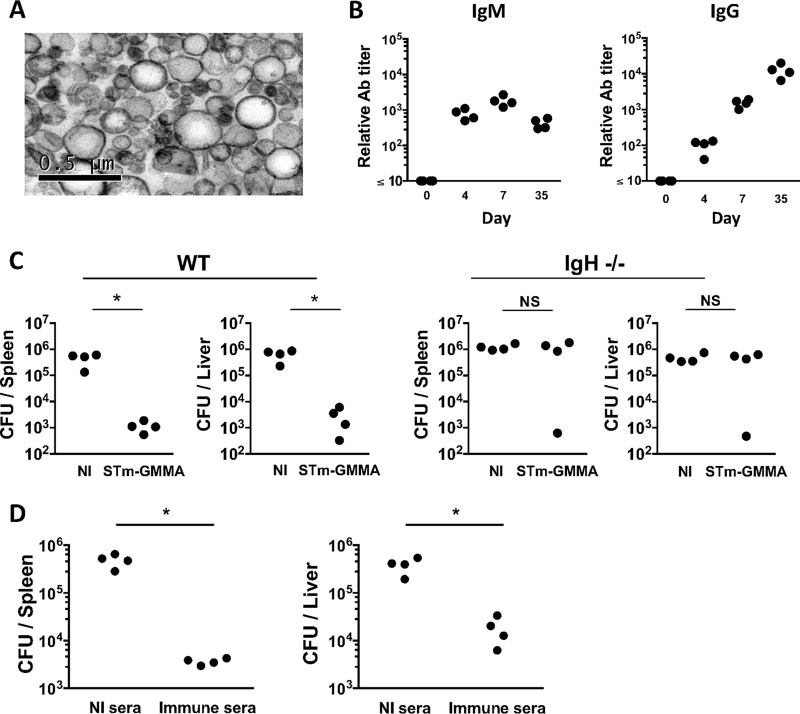FIG 1 .
STmGMMA induce antibodies that can protect against infection. (A) Electron microscopy of STmGMMA. STmGMMA were purified from S. Typhimurium ΔtolR culture supernatant, prepared for staining, and visualized by TEM. (B) Mice were immunized i.p. with 1 μg of STmGMMA for the times indicated, and serum samples were subjected to ELISA for anti-STmGMMA IgM (left) and IgG (right). Each dot represents one serum sample. (C) WT (left) or B-cell-deficient (IgH−/−) (right) mice immunized once i.p. with 1 μg of STmGMMA for 14 days were infected i.p. with 5 × 105 CFU of S. Typhimurium SL3261, and bacteria in the spleen (left) and liver (right) were enumerated 5 days postinfection. Each dot represents one mouse, and graphs are representative of two independent experiments. (D) Naive WT mice were infected i.p. with 5 × 105 CFU of S. Typhimurium SL3261 that were preopsonized with serum from nonimmunized mice or serum from mice immunized with STmGMMA for 35 days. Bacteria in the spleen (left) and liver (right) were enumerated at 24 h postinfection. Each dot represents one mouse, and results representative of two independent experiments are shown. The Mann-Whitney U test was used to determine significant differences between groups linked by bars. NI, nonimmunized; NS, nonsignificant;*, P ≤ 0.05.

